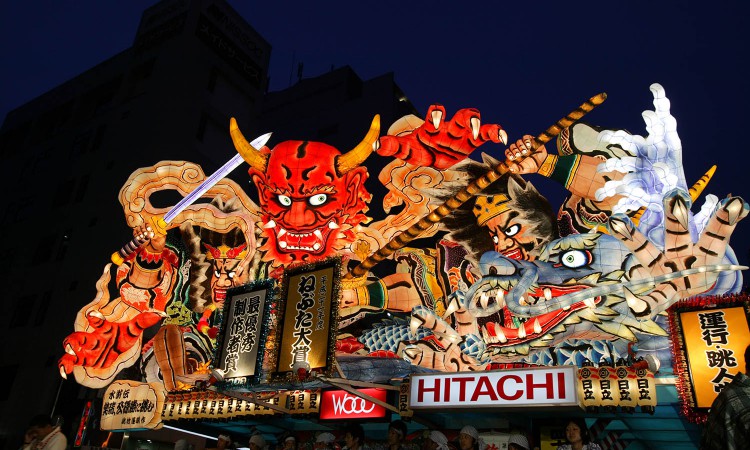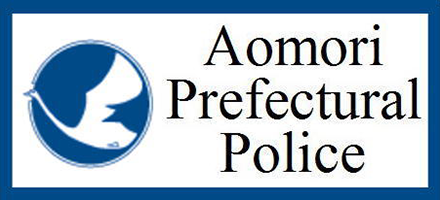Ride the local train, visit unknown countryside towns, and discover the inherited traditions and culture of the Tsugaru region. Catch a glimpse of the real Japan through landscapes, cuisine, and more that you can’t find anywhere else. Experience countryside scenery and the local way of life through this special model sightseeing course.
*This course was made using train schedules from March 2020. Please understand that train times may change in the future.
Information
The WANO PASS value pass includes a one-day unlimited travel ticket for the Konan Railways Konan Line, an entrance ticket for Seibi-en Garden, and a free sake cup coupon from Narumi Sake Brewery (adult tickets only). On sale now.
| Price | Adult ¥1,100 (Middle school and above), Child ¥500 (Elementary School Students) |
|---|---|
| Where to Buy | Hirosaki, Hirosaki Higashiko-Mae, Hiraka, Tsugaru-Onoe, and Kuroishi stations on the Konan Railways Konan Line |
Model Sightseeing Course
- 8:38 (Konan Railways Konan line) Depart from Hirosaki Station
- 22 minutes
- 9:00 Arrive at Tsugaru-Onoe Station
- 10 minutes
- 1.Seibi-en Garden (40 minutes)
- 5 minutes
- 2.Saruka Park (40 minutes)
- 25 minutes
- 3.Daijyu Shokudo (40 minutes)
- 5 minutes
- 12:14 Depart from Tsugaru-Onoe Station
- 4 minutes
- 12:18 Arrive at Tanbo Art Station
- 2 minutes
- 4.Rice Paddy Art Second Venue (40 minutes)
- 13:18 Depart Tanbo Art Station
- 8 minutes
- 13:26 Arrive at Kuroishi Station
- 10 minutes
- 5.Komise Street
- 6.Tsugaru Komise Eki (30 minutes)
- 7.Narumi Sake Brewery (20 minutes)
- 8.Matsu-no-yu Community Center (20 minutes)
- 10 minutes
- 16:50 Depart from Kuroishi Station
- 34 minutes
- 17:24 Arrive at Hirosaki Station
You can find the numbered locations used in this model course on Google Maps. Please refer to the link below.
Model Sightseeing Course
- Hirosaki Station
- Tsugaru-Onoe Station
- Seibi-en Garden
- Saruka Park
- Daijyu Shokudo
- Tsugaru-Onoe Station
- Tanbo Art Station
- Rice Paddy Art Second Venue
- Tanbo Art Station
- Kuroishi Station
- Komise Street
- Tsugaru Komise Eki
- Narumi Sake Brewery
- Matsu-no-yu Community Center
- Kuroishi Station
- Hirosaki Station
START : 8:38 (Konan Railways Konan line) Depart from Hirosaki Station
22 minutes
9:00 Arrive at Tsugaru-Onoe Station
10 minutes
1.Seibi-en Garden
Seibi-en Garden is said to have been used as a reference for the setting of Studio Ghibli’s film The Secret World of Arrietty. Work began on Seibi-en in 1902 and took nine years to complete. Counted among the Three Great Landscape Gardens of Japan during the Meiji era, the garden exemplifies the Oishi Bugaku-ryu style of landscaping often seen in the Tsugaru region. The “Seibi-kan,” a building made with a traditional Japanese-style first floor and a Western-style second floor, is also in the garden. There are no other examples of buildings of this style in Japan, and the combination of the garden and the Seibi-kan creates a scene of particular beauty.
Information
| Hours | Mid-April – Late September: 9:00-17:00 October – Mid-November: 9:00-16:30 Mid-November – Mid-April: 10:00-15:00 (During this time, the entrance and reception will be moved to the Motenashi Roman-kan next door.) |
|---|---|
| Closed | December 29 - January 3 |
If you want to explore this area even more
Minamida Onsen Hotel Apple Land (15 min walk from Hiraka Station)
Minamida Onsen Hotel Apple Land is popular for its onsen bath, which is filled with floating Aomori apples. They say that apples have skin benefits, and the bath is popular for giving you beautiful skin.
5 minutes
2.Saruka Park
Spanning 6.3 hectares, Saruka Park has a great view of Mt. Iwaki, which is often called the Tsugaru region’s Mt. Fuji. This hidden gem of a park is home to almost 330 cherry blossom trees that bloom beautifully in the spring. In summer, lotus blossoms, which are said to be the northernmost in Japan, bloom gorgeously on the surface of Kagamigaike Pond. In autumn, you can enjoy how the leaves turn pure red.
If you want to explore this area even more
Saruka Shrine (15 min walk from Tsugaru-Onoe Station)
Said to have been founded in 807, Saruka Shrine is inside Saruka Park and is one of the representative shrines of the Tsugaru Region. To the east of the shrine is Kagamigaike, a pond filled with lotus blossoms, and if you cross the red bridge, there is another shrine dedicated to the goddess Benten. There is much to enjoy, including the Aomori-style sumo ring, a popular sport in the prefecture, as well as buying omikuji (fortune slips) and o-mamori (protective charms).
25 minutes
3.Daijyu Shokudo
Opened in 1900, Daijyu Shokudo is one of the restaurants in the Tsugaru Region with over 100 years of history. Currently, the 4th generation chef runs the kitchen and is loved by local customers for diligently preserving the restaurant’s original flavors. The A Set, featuring yakisoba, ramen, and onigiri, is popular. The yakisoba is especially high quality. Hand-stretched, thick noodles are made in-house and stir-fried in lard with pork and onion before being mixed with a rich sauce to create what many critics agree is Aomori Prefecture’s most delicious yakisoba. 【English and Chinese (Traditional) menus are available】
Information
| Hours | 11:00-16:00 |
|---|---|
| Closed | Mondays (Tuesday if Monday is a holiday) |
If you want to explore this area even more
Farming Storehouses (40 min walk from Tsugaru-Onoe Station)
In the Kanaya area of Hirakawa there is a group of 78 storehouses that have been used to store rice and apples for many years. Storehouses are usually built far into a plot of land, but here they are built along the road. This is a rare sight to see and symbolizes the prosperity of the area. The Kura Kobo Storehouse Café, which only opens on the last Friday and Saturday of each month, sells bread made using local rice flour and domestically-produced flour that is fermented with natural yeast. None of the bread contains any additives or eggs. There are many regular customers who travel long distances just to come to this café.
5 minutes
12:14 Depart from Tsugaru-Onoe Station
4 minutes
12:18 Arrive at Tanbo Art Station
2 minutes
4.Rice Paddy Art Second Venue
Every year from mid-June until early October, you can see giant artworks created by planting different colored varieties of rice on a rice field canvas in Inakadate. There are many repeat visitors who come to see the new art every year. The art is planted in two main locations, and the second venue is only a short walk from Tanbo Art Station on the Konan line. This venue also features stone art, subtly detailed images made by carefully arranging different colored stones. Be sure to give yourself plenty of time to enjoy the art as the venue is always crowded on holidays and during summer break.
Information
| Viewing Season | Field No. 2: Mid-June – Early October (Open daily) |
|---|---|
| Entrance Hours | 9:00-16:30 (May be different depending on the time of year) |
If you want to explore this area even more
Rice Paddy Art First Venue (10 min shuttle bus from Tanbo Art Station)
If you want to enjoy even more rice paddy art, then check out the First Venue (by Inakadate Village Hall) as well! There is a free shuttle bus between the First and Second Venues (runs every 30min to an hour).
2 minutes
13:18 Depart Tanbo Art Station
8 minutes
13:26 Arrive at Kuroishi Station
10 minutes
5.Komise Street
Selected as one of the Top 100 Streets in Japan, Komise is a wooden arcade street that was built to protect people from the sun in summer and blizzards during harsh northern winters. It has remained unchanged since Kuroishi was the castle town of the Tsugaru-Kuroishi Domain during the Edo Period. With old merchant houses and sake breweries, you can still feel the distinct traditional atmosphere of the Tsugaru region.
If you want to explore this area even more
Nakano Momiji Mountain (25 min bus from Kuroishi Station)
Kuroishi’s Nakano Momiji Mountain is a well-loved spot to see the autumn leaves, with hundreds of maple trees that were brought over from Kyoto as saplings back in 1802. The beautiful scenery is highly rated, with multicolored autumn leaves, a waterfall, a stream, and a red bridge. The spot is very popular from mid-October to early November when the leaves are lit up at night.
6.Tsugaru Komise Eki
This souvenir store has free live Tsugaru-shamisen performances at 11 am and 2 pm every day from late April to early November and on weekends and holidays between mid-November and mid-April. Tsugaru-shamisen displays the performer’s personality through a lot of variation, tempo changes, and performance styles, such as strumming or hitting the shamisen strings. We recommend this store if you are looking for local souvenirs you can only find in Kuroishi.
Information
| Hours | 9:00-17:00 |
|---|---|
| Closed | January 1st |
If you want to explore this area even more
Kuroishi Onsen Village (bus from Kuroishi Station)
Kuroishi Onsen Village has been a popular hot spring health resort since long ago, with four separate onsen areas: Nuruyu, Ochiai, Itadome, and Aoni. Nearby spots you can visit include the Tsugaru Traditional Craft Center and the Tsugaru Kokeshi Doll Museum, which displays and sells multicolored kokeshi dolls that are also very popular overseas.
7.Narumi Sake Brewery
This long-standing sake brewery has been around since 1806 (roughly 210 years ago), and sake is brewed and stored in a storehouse on site. The sake is made using subsoil water from Hakkoda Mountains and local rice. The current chief brewer is the 7th generation head of the company. Their specialty sake is highly acclaimed, and they have previously won a gold award from the National Research Institute of Brewing. Inside the brewery, you can buy sake and also enjoy the splendid Tsugaru-style Japanese garden.
Information
| Hours | 8:30-16:30 |
|---|---|
| Closed | Sundays (Opening hours are subject to change, and the brewery is sometimes closed temporarily) |
(The WANO PASS includes a coupon for a free sake cup from Narumi Sake Brewery (adult tickets only). If you are 20 years old or above, you can also try tasting three types of sake)
8.Matsu-no-yu Community Center
Matsu-no-yu was a bath-house for many years and, together with its iconic 350-year-old pine tree, is deeply loved by the locals. Nowadays, it is open to the public as a communal space. The entrances still have curtains saying ‘men’ and ‘women’ over the door like the entrance to a bath-house, and the bath itself is preserved inside. (You can stand inside the bath!) There’s a fashionable café called Jumonji Café inside an old storehouse behind the Matsu-no-yu Community Center. The dessert and drink set and the lunch menu are very popular.
Information
| Hours | 9:30-18:00 |
|---|---|
| Closed | Mondays December to March (Tuesday if Monday is a holiday). Beginning and end of the year. |
10 minutes
16:50 Depart from Kuroishi Station
34 minutes
17:24 Arrive at Hirosaki Station




























